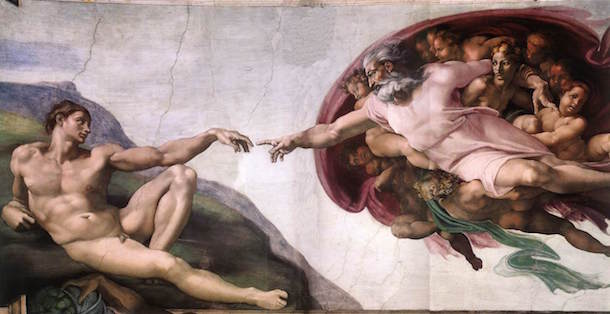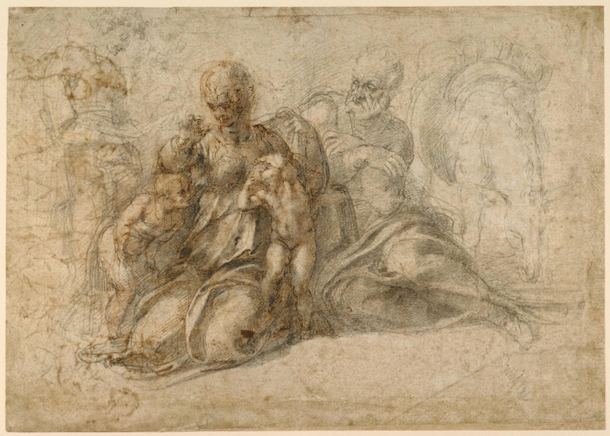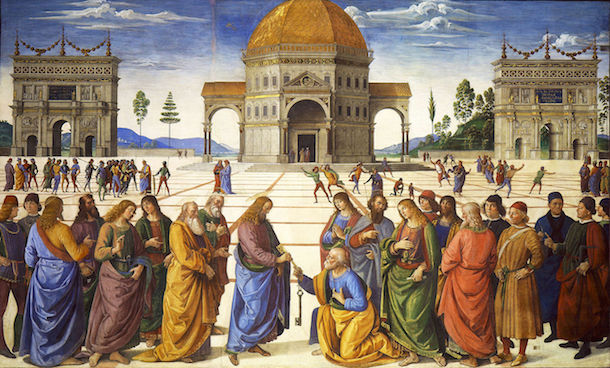Renaissance
"Beauty is produced by the pleasing appearance and good taste of the whole, and by the dimensions of all the parts being duly proportioned to each other."
Renaissance is an artistic movement that developed in Italy in the 14th century and spread throughout Europe reaching its peak with the 16th century art of the Italian masters Leonardo da Vinci, Michelangelo and Raphael. Renaissance, a French word meaning "rebirth", indicates the period that came after Medievalism and saw the humanistic revival of classical art. Moving away from the religious atmosphere that dominated the Middle Age, Renaissance artists turned their attention to the beauty and mystery of the natural world and to the individual man, who was considered the centre of this new era. Explore the Renaissance movement by starting from What is Renaissance? and browse our curated list of artworks from renaissance painters such as Andrea Mantegna, Giovanni Bellini, Sandro Botticelli and others.
History of Renaissance
In 1401 in Florence, Italy, a competition to sculpt a set of bronze doors for the Baptistery of Florence Cathedral drew entries from seven young sculptors amongst whom where Brunelleschi, Donatello and also Lorenzo Ghiberti, who ended up winning it. This competition is considered the birth date of Renaissance, as it encouraged artists to search for a new way of painting that could depict the real aspect of the human mankind. Following some humanistic ideals promoted by the literary activities of Dante Alighieri and Petrarch, as well as the medieval paintings of Giotto, who developed a manner of figurative painting that was naturalistic and three-dimensional, Renaissance art developed in Italy in the 14th century and then spread throughout Europe up until the 16th century.
Early Renaissance (1400-1481)
Early Renaissance is the period that starts in 1401 with the competition of Florence and ends with another commission that drew many artists together. At the end of the 15th century, around 1475-81, Pope Sixtus IV decided to rebuild the Sistine Chapel and authorised a group of painters i.e. Sandro Botticelli, Pietro Perugino, Domenico Ghirlandaio and Cosimo Rosselli to cooperate and decorate the Chapel with frescoes depicting the Life of Christ and the Life of Moses. In these frescoes the artists shared the principles of the Renaissance, such as anatomy and the study of the human figure, using techniques of lighting and perspective that characterised the Italian movement. This period therefore saw painters being interested in emulating classical art focusing on symmetry and the creation of perfect forms.
High Renaissance (1482-1525)
High Renaissance is the period best known for some of art’s greatest masters: Leonardo da Vinci, Michelangelo and Raphael. These masters expressed an interest in perspective and space, bringing more realism into art. They sought to perfect some aspects of painting developed by the early Renaissance's artists by studying and recording their observations of the natural world and the human body. Each one of the three masters embodies an important aspect of the period: Leonardo was an intellectual genius interested in investigating the mysteries of nature and the human anatomy; Michelangelo was interested in studying the human body as the ultimate vehicle for emotional expression; and Raphael, who can be considered as a synthesis of the two artists, created artworks that perfectly express the harmonious and beautiful spirit of the classical art. In Northern Italy the High Renaissance was represented by the paintings of Bellini, Giorgione and Titian.

Renaissance ended when the strains between Christian faith and classical humanism led to Mannerism in the latter part of the 16th century. Renaissance has left an immense artistic heritage to Italy, Europe and the whole world, and today it is considered by many the most important art movements in the history of art.
Text by Cristina Motta

